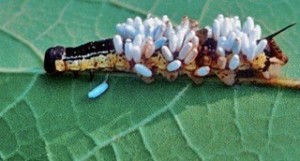
A reader recently wrote to us about Catalpa worms, also called “Catawba worms,” that are on her Catalpa trees, or “Catawba trees.” (“Catawba” can basically always replace the word “Catalpa” – they are both common, interchangeable names.) The phrasing of the reader’s email is a slightly peculiar. She speaks of her “fourth crop this year for the Catalpa worms,” which seems to imply she is referring to the Catalpa worms themselves as the “crop.” (This isn’t as strange as you might think because although people plant Catalpa trees for various reasons, they often plant them precisely to attract Catalpa worms, which make excellent fish bait, and thus the worms might be referred to as a “crop.”) However, she then says the “crop has white egg like things on them,” and here we are not sure if the crop means the Catalpa worms or the Catalpa trees, as the latter of which should be where any Catalpa eggs are found. In any case, the reader is wondering what the “white egg like things” are because she didn’t see them in the first three “crops.” So, we have a relatively straightforward question: what are the white egg-like things on her Catalpa worms or Catalpa trees?
We should begin by noting that Catalpa worms are not actually worms. They are caterpillars, the larval form of moths and butterflies. Catalpa worms are more precisely the larvae of sphinx moths, which are hawk moths (i.e., the members that make up the Sphingidae family). After they hatch from their eggs, Catalpa worms mature for about three weeks before they pupate. This is relatively quick, which perhaps explains how the reader is already dealing with her fourth generation of caterpillars, provided “crop” refers to the generation of caterpillars.
As for the reader’s basic question, the answer could be quite simple: the “white egg like things” may not just be “egg like,” but may in fact simply be eggs. There would be nothing unusual about finding Catalpa eggs among a lively community of Catalpa worms. Eggs are generally found in large groups – the biggest clusters can contain a thousand eggs and are generally found on the underside of leaves, whereas the smaller groups (of about a 100 or so) can be found on the branches of a tree. Why the reader never found the eggs before (assuming they are eggs) is a bit strange, but perhaps they simply escaped her attention. The eggs only last five to seven days before they hatch, so the window to see them is somewhat brief, and one might also have to look for them because the most noticeable clusters could be out of view under leaves. If the eggs appeared to be on the caterpillars, as the reader may be reporting, then perhaps the females were in the act of laying them. Or perhaps the reader was simply using word “crop” in two different ways – first to refer to Catalpa worms, and in the next sentence to the Catalpa trees.
Yet another possibility is that our reader is finding Catalpa worms that have been attacked by wasps. Brutally, female wasps can lay their eggs inside the skin of the caterpillars. Larvae then hatch inside the Catalpa worms and feed there as they mature. Upon reaching maturation, they emerge out of the Catalpa worm and spin white cocoons that can be easily seen on the caterpillar’s skin, as this picture shows:
So, to conclude, the “white egg like things” are either eggs, or else they are wasp larvae cocoons. Which of these our reader is finding largely depends on what she means by the word “crop,” but we are reasonably sure she is finding on these two things. We hope this answers our reader’s question and that we have provided all the information she needs.
All About Worms is always free, always reader-supported. Your tips via CashApp, Venmo, or Paypal are appreciated! Receipts will come from ISIPP Publishing.
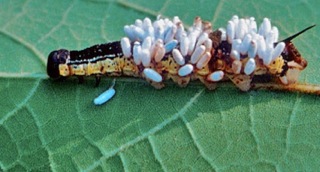



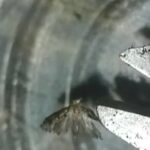
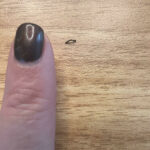

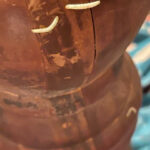
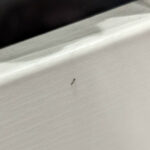
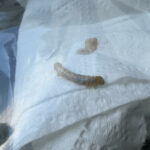
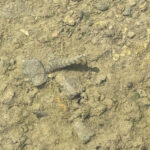
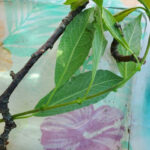






what will make the Catawba worms leave the tree on it for years and just leave gone